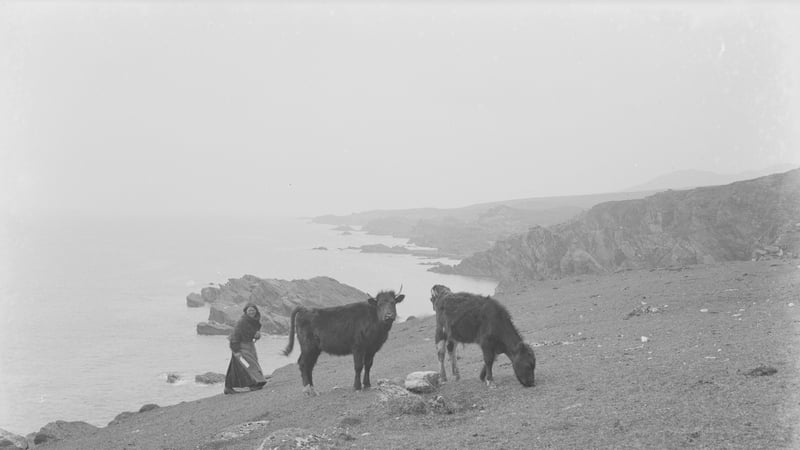From RTÉ Brainstorm:
On many hillsides in Ireland today, one can still see the physical remains of this extraordinary way of life. The herders would sleep in groups of two to five in small one-roomed huts.Share
Typically these structures had stone walls with ‘scraws’ of peat (from the Irish scraitheacha) placed on top of them and then more scraws and/or heather used as roofing. Some older huts were probably built largely of wattle or wickerwork, especially before the 1700s when trees were more common in our uplands.
Fascinatingly, by the 1800s, it was mostly young people and teenage girls especially who had the job of looking after cows at these seasonal ‘boolies’.
This gave rise to a vibrant but now largely forgotten cultural scene in Ireland’s uplands. Oral history collected in the 1930s and 1940s in Connemara, Mayo, Donegal, and the Galtee Mountains makes clear that booleying facilitated the transmission of a lot of important cultural knowledge.
One man from Cloch Cheannaola in Donegal states that his mother had learned her songs from other dairymaids in the hills, while another account from Iorras Aintheach in Galway outlines how the girls not only sang but played musical instruments and danced as well.
But there could be danger too. Several folk stories in Irish from south Connemara and west Mayo portray upland booley sites as places where weird things were more likely to happen, especially at night. Hags or cailleacha frequently appear, cursing people or taking the form of a hare in order to steal milk from the cows. (Read more.)


















No comments:
Post a Comment